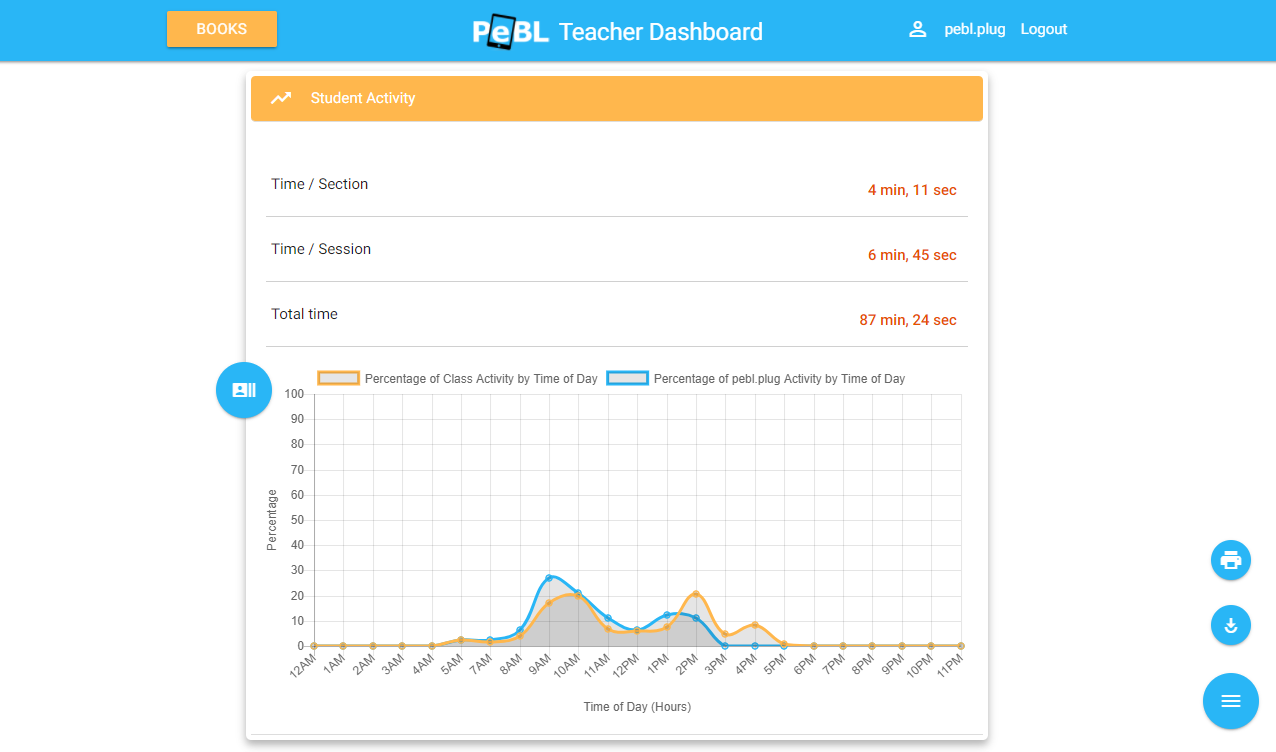Dashboards and analytics
Display dynamic individual and team progress dashboards, with fine-grained analytics available to stakeholders for improving product.
- Information can be dynamically updated in charts, graphs, etc.
- Users can choose between Individual, team, or aggregate data
- Dashboards display data within reader interface
- Fine-grained analytics help publishers improve product
- User rating data helps learners identify most successful pathways for learning

Give learners feedback, assess them, and report to stakeholders with visual analytics